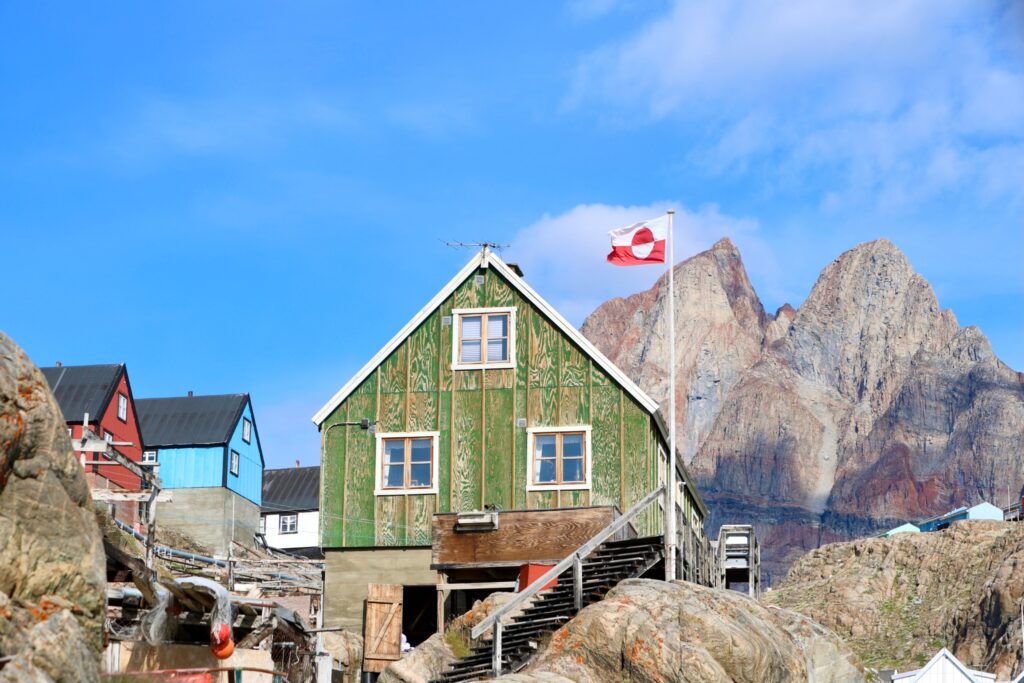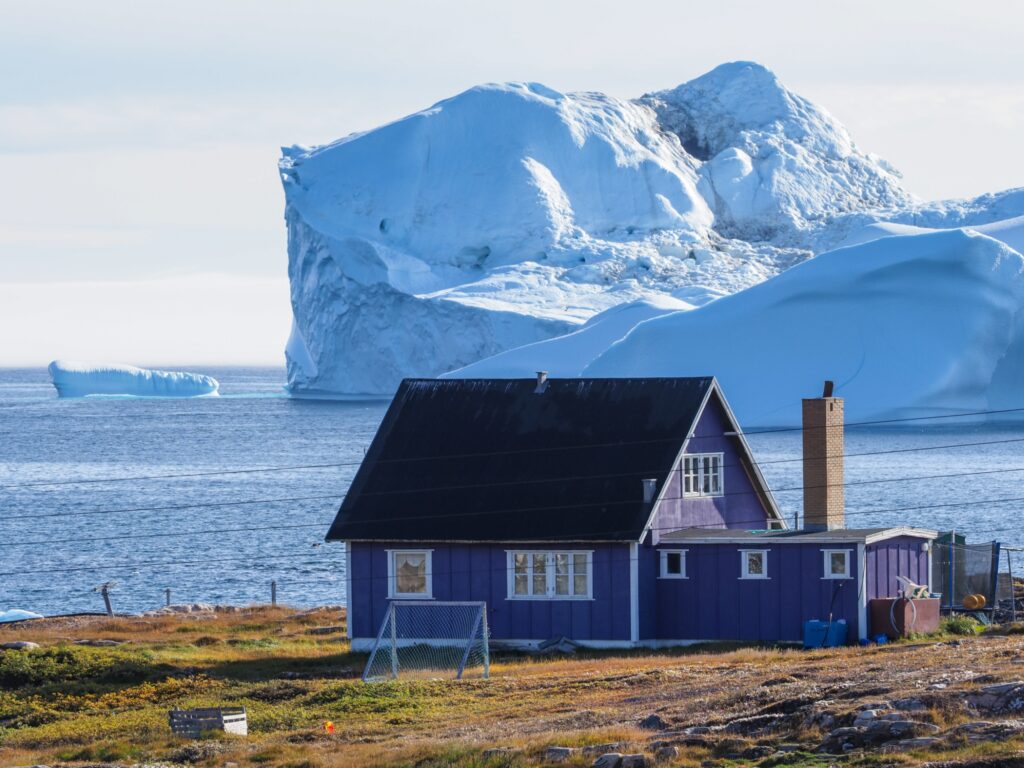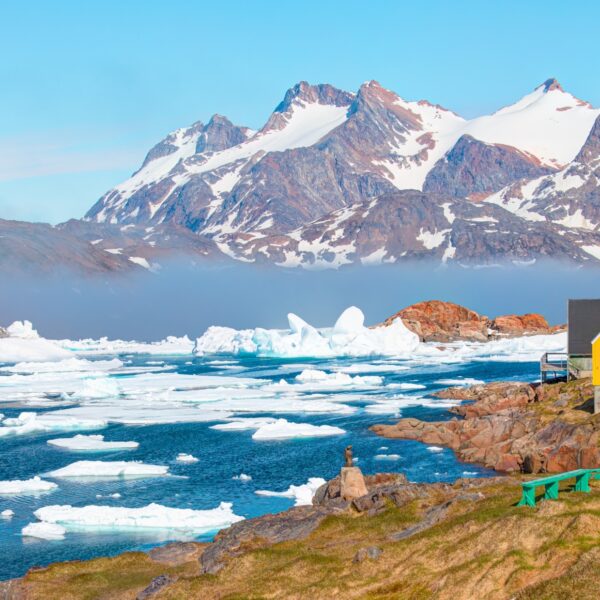Greenland – Where the Map Ends and the Adventure Begins
Greenland is one of the last truly remote places on Earth — a massive island of ice and rock, where small communities cling to the coastline and nature sets the rules. Few places are more remote. Fewer still as rich.
The people
Locals are welcoming, and daily life is built around strong traditions, practical knowledge, and a close connection to nature. In many places, hunting and fishing are still key parts of life — not as a hobby, but as a way of living.
A coastline without roads
Greenland’s west coast stretches up to the ice. From the southern fjords to the high Arctic, there are no roads between the towns. Every connection happens by sea or by air. That’s not a limitation — it’s a way of life. Boats and sleds have always been more important here than cars. The ocean is the main road.
When the weather turns or the supply boat is delayed, shelves stay bare. Planning, sharing, and resourcefulness aren’t habits — they’re necessary.
A culture shaped by climate
Greenlandic culture is deeply tied to nature. In the north, hunting is still a respected skill. In towns and settlements along the west coast, local knowledge — of sea ice, of weather, of animal behavior — is what keeps life going. At the same time, Greenland is modern. Young people go to university, art is booming, and the country is defining its identity in our rapidly changing world.
You’ll hear stories passed down over generations. You’ll meet people shaped by weather, sea, and ice — warm and quietly proud.
Hunting is still a way of life
About 15% of Greenland’s workforce is employed in fishing, hunting, and agriculture. In many homes, a rifle stands by the door—not for show, but for food and protection. Hunting remains a vital source of both nutrition and income. Seals, whales, reindeer, and musk oxen are hunted for the table and often shared within the community. Polar bears still visit settlements, and it’s often the dogs who sound the alarm. Each region follows strict quotas on how many polar bears may be hunted per year, ensuring traditional practices continue within sustainable limits.

Family & Neighbours
In towns and settlements without road connections, the nearest help is often hours away by boat or snowmobile. Daily life depends on mutual support. If something breaks or the weather shifts, neighbours step in—because they have to. Generations often live under the same roof, and every household is part of a shared safety net. Self-reliance is essential, but it’s built on community.



The world’s eyes are turning north. Why visit now?
The global spotlight is slowly turning toward this part of the world. Greenland is having a moment in the spotlight as the U.S. President Donald Trump maneuvers to gain control of the mineral-rich Arctic country. A world power expressed interest in buying it — not as a joke, but as a strategic move. As the Arctic ice retreats, interest in Greenland’s natural resources and geopolitical position grows.
For the people who live here, this attention is nothing new. They’ve long known the value of their land — not just in minerals, but in history, culture, and autonomy.
Greenland is not for sale. But it is open — for those who come with respect and curiosity.
Greenland for sail – not for sale
“We’ve been dreaming about Greenland for a long time… a long time. Everybody’s talking about it. Tremendous place. Beautiful ice, the best ice — not like the fake stuff you get in cocktails. We just gotta go there. We are going to get there. Whether there’s an agreement or not — we’re going. Nobody sails to Greenland like we do, believe me. We’re sailing to Greenland this summer, and it’s gonna be YUGE.”
Says Emil, with a cheeky smile
6 facts about Greenland
- The population is 56,699 people (2023). The indigenous people, the Inuit, make up a clear majority on the island.
- Greenland is part of the Kingdom of Denmark, but has a high degree of self-government, which was last extended in 2009. Self-government does not include matters of national politics, such as foreign and security policy.
- The official language in Greenland is Greenlandic, which most of the people speak. Many also understand Danish, and some consider themselves bilingual, with Danish as a second language.
- The capital of Greenland is Nuuk (Godthåb).
- Greenland is the world’s largest island and is located on the North American continent. Geopolitically, the island is part of Europe.
- As much as 80% of Greenland is covered by ice
Expeditions to Greenland
-
 Svalbard – Greenland – IcelandNOK 86.500
Svalbard – Greenland – IcelandNOK 86.500 -
 From East-Greenland to Iceland with Valiente 2026NOK 48.500
From East-Greenland to Iceland with Valiente 2026NOK 48.500 -
 From Iceland to East-Greenland with Valiente 2026NOK 48.500
From Iceland to East-Greenland with Valiente 2026NOK 48.500
